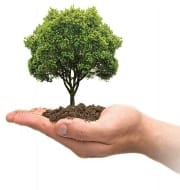Miyawaki Method of Afforestation
The Mansa unit of Punjab state Police is developing Miyawaki forests. Also, the Bengaluru Hennagara Lake is to get a new life with Miyawaki Forests.
Miyawaki forest is a method of afforestation developed in Japan. It involves the planting of saplings in a small area resulting in formation of dense forests in relatively short time periods. The method is specifically used in urban areas to increase green cover. Some of the advantages of the method include low space requirements and lower chances of weed growth as the dense canopy prevents sunlight from reaching the ground.
About Miyawaki Afforestation Method
It is also called Potted Seedling Method. The technique is used to create dense multi-layered forests. It is named after a Japanese botanist who developed the method. It involves planting saplings in small areas, making them fight for resources and grow ten times quicker.
The Kerala Forest Department has adopted Miyawaki Afforestation Method to be used in government schools, offices and in waste lands.
What is Miyawaki Afforestation Method?
A pit is dug. The dimensions of the pit depend on the space available. The pit is then filled with one layer of compost, a layer of natural waste such as coconut shells, bagasse, etc and top layer with red soil. The saplings are then planted and maintained regularly for a year. The method will cost Rs 20,000 per 600 square feet.
Benefits of the method
- The method is ideal to turn backyards into mini-forests and hence is ideal for urban afforestation.
- The method blocks the sunlight from reaching the ground as the trees are planed as close as possible. This will prevent growth of weeds.
- The saplings become maintenance free after first three years
- A forest can be created in just 20 to 30 years by using this method. On the other hand, it takes 200 to 300 years to create a forest by using conventional methods.
Month: Current Affairs - December, 2020


